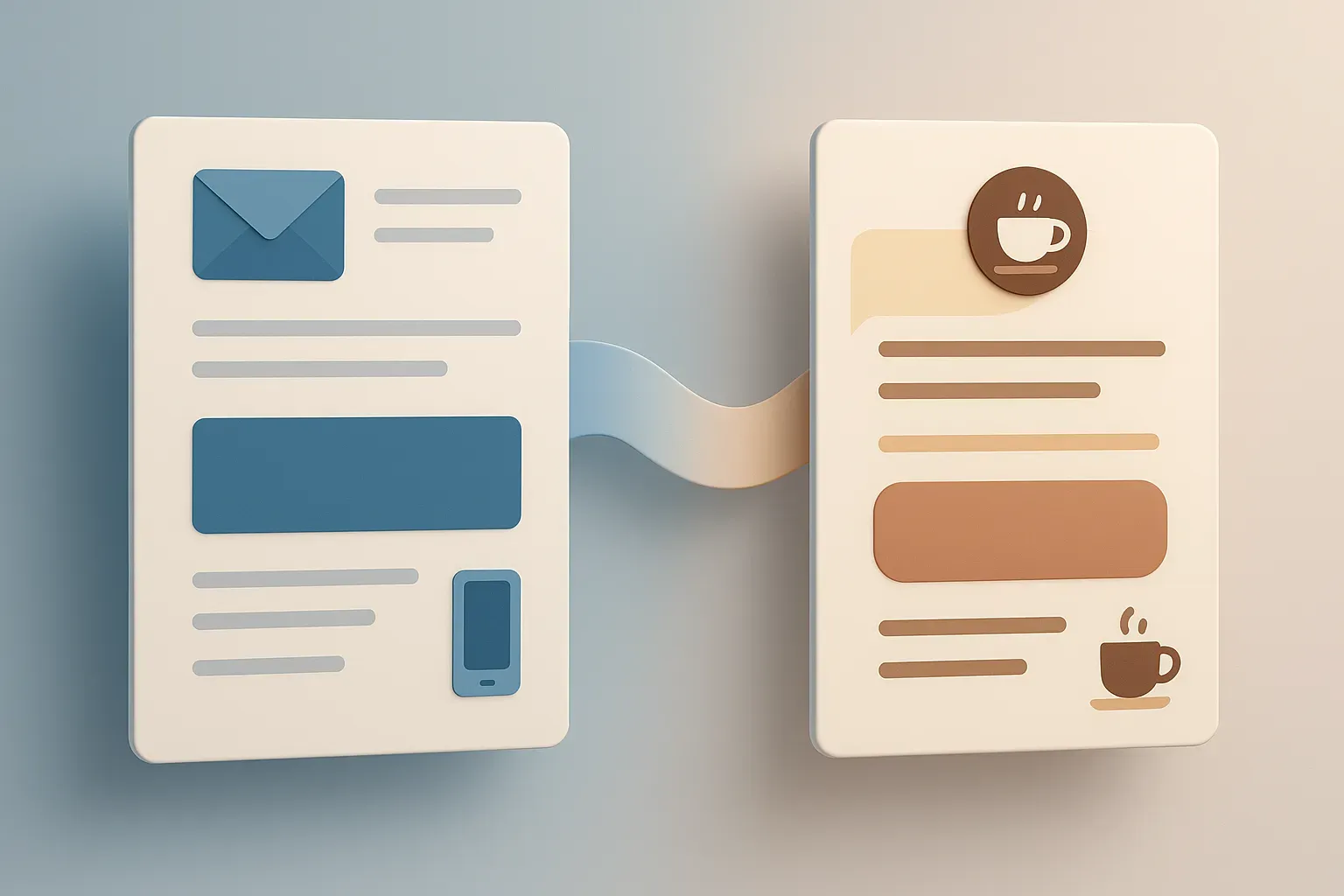Effective email marketing demands more than generic messages, as demonstrated by experts who consistently achieve higher engagement through personalization. Modern marketers must understand their audiences’ behaviors, motivations, and specific needs rather than relying solely on demographic information. By tailoring communications to address the real problems customers face and speaking their language, businesses can build meaningful relationships that translate to measurable results.
- Data-Driven Segmentation Creates Meaningful Customer Dialogues
- Focus on One Person, One Job
- Behavior-Based Personalization Builds Lasting Trust
- Segment by Behavior to Exceed Industry Benchmarks
- Adapt Messages to Different Buyer Motivations
- Personalize Around Motives Not Just Names
- Tailor Messages to Motivation Not Demographics
- Speak to Reality Rather Than Role
- Customize Content Based on Customer Signals
- Refine Segments Based on User Intent
- Build Relationships Through Audience Understanding
- Communicate Their Language Not Just Names
- Connect with Emotional Textures of Customer Dreams
- Strategic Segmentation Addresses Specific Customer Needs
- Understand Customer Journeys for Better Engagement
- Target What Customers Care About
- Target People Who Fix Real Problems
- Role-Specific Content Delivers Better Campaign Results
Data-Driven Segmentation Creates Meaningful Customer Dialogues
Personalization lies at the heart of engagement, loyalty, and conversion. My strategy is based on data-driven segmentation, behavioral insights, and dynamic content that speaks directly to each audience segment’s needs and motivations.
I start by segmenting audiences using:
Demographics: age, gender, location, income level
Behavioral data: purchase history, browsing patterns, engagement rates
Customer lifecycle stage: new leads, active customers, dormant users, VIPs
This helps create buyer personas that guide tone, messaging, and offers.
For example, for a women’s supplement brand, I developed two key personas:
Persona 1: “Wellness Sophie”
Profile: 32, Amsterdam; health-conscious, practices yoga, seeks hormonal balance and better sleep
Behavior: Reads hormone health blogs, shops adaptogens and teas, opens emails early mornings
Strategy: Empathetic and nurturing tone, educational content on wellness, product spotlights, loyalty discounts
CTA: “Balance your body naturally,” “Discover your calm”
Result: +42% open rate vs. non-personalized emails
Persona 2: “Busy Anna”
Profile: 45, Utrecht; career-driven, focused on energy and immune support
Behavior: Buys in bulk, prefers concise content, engages evenings (8-10 PM)
Strategy: Efficient tone, short-form content with clear benefits, bulk discounts, reorder reminders
CTA: “Fuel your day in seconds,” “Strong. Energized. Ready.”
Result: +29% repeat purchases, -20% unsubscribes
Through tailored content, tone, and timing, we turned email marketing into a meaningful dialogue — one that respects each woman’s lifestyle and goals while driving measurable impact.

Focus on One Person, One Job
I usually start by asking two simple questions, first, who is the reader, and second, what decision do I want them to make after this email.
I look at a few facts only. Role, industry, company size, where they are in our cycle, and what they did most recently that I can see. A download, a demo, a support ticket, or a renewal date. I keep a short note for each persona that lists the problem in their words, the one metric they own, one proof I can share, and the smallest next step that moves their job forward. That note gives the email its subject, its first sentence, its proof, and its ask. It also keeps the tone steady because I am speaking to one person doing one job, not to a crowd.
I keep the message short and clear. One point, one outcome, one ask.
The subject names the result they care about. The opening line shows I know what is on their screen this week. The body states one way we can help and offers a simple step that takes less than thirty minutes. I send when they usually clear mail and I track replies in a single place so I can spot the phrases that land. I refresh each persona note once a quarter with new language from real calls so the emails keep sounding like the people we serve.
Here is an example for a Head of Customer Support at a mid-market SaaS company who is dealing with a growing ticket backlog.
Subject: “Cutting first-response time in the next 30 days”
“Hi, I saw your team has added new seats and I know that tends to stretch first response time. If a faster first reply is on your list this month, I can share a simple workflow that we use with teams your size. It moves low value tickets to self-serve and routes high value ones straight to the right agent. We set it up in one short working session and measure it in your help desk so you can see the change on your dashboard.
If you are open to it, I will send a one-page outline and we can hold a thirty-minute call next week to shape it to your queue.
Does Tuesday or Wednesday morning work?”

Behavior-Based Personalization Builds Lasting Trust
My approach to email personalization goes beyond basic demographics to focus on behavior-based segments. Rather than creating campaigns for broad categories like “male 25-34,” I group users by their intent signals — what they’ve clicked, read, or purchased — and enhance this with contextual data such as lifecycle stage or location. This allows me to adapt the tone, timing, and offer type to match their mindset, not just their profile.
A recent wellness app campaign illustrates this approach perfectly. We identified two distinct personas: performance-driven optimizers and balance-seeking newcomers. For the optimizers, we crafted concise, results-oriented messages like “Track progress. Unlock peak performance.” The newcomers received more nurturing content focused on emotional reassurance: “Small steps, lasting calm.” We also scheduled delivery times based on each group’s engagement patterns — early mornings for one segment and evenings for the other.
This tailored approach generated impressive results: a 43% increase in open rates and nearly double the click-through rate compared to generic email blasts. In my experience, personalization rooted in behavior and empathy rather than assumptions doesn’t just improve metrics — it builds lasting trust with your audience.

Segment by Behavior to Exceed Industry Benchmarks
Our approach to email personalization centers on segmentation based on behavioral data and business objectives. We analyze how recipients interact with our content distribution platform. We look at which features they use, what type of content they amplify, and their campaign goals. This creates distinct personas: enterprise marketers focused on brand awareness, agencies managing multiple clients, and solo practitioners building thought leadership. Each segment receives content addressing their specific pain points.
For example, we send different email sequences to enterprise teams versus individual consultants. Enterprise marketers get case studies showing ROI at scale. They receive integration guides for their existing tech stack. We share strategies for coordinating campaigns across departments. Solo practitioners receive actionable tips for maximizing reach with limited resources, personal branding advice, and time-saving automation features. We track engagement metrics for each segment and adjust messaging accordingly. Open rates consistently exceed industry benchmarks by 40%. Conversion rates have doubled since implementing this segmented approach.

Adapt Messages to Different Buyer Motivations
Recently, our company has started making our newsletters more personalized, and this has greatly helped our marketing. We no longer send the same message to everyone, but instead focus on what’s important to different buyers.
We differentiate people not only by age, location, and type of home, but also by why they’re buying. We have separate emails for each group, with their own message and tone. We adapt to the audience and their preferences.
For older customers who value reliability and convenience, we write about the longevity of our windows, their warranties, and how easy they are to maintain. We also show photos of windows in typical homes and customer testimonials.
And for young families, we focus more on savings and new technologies. We explain how our windows help save money and improve the indoor climate. Here, we use more dynamic visuals and links to savings calculators.
For those living in cold places like Alberta or Manitoba, we emphasize how our windows protect against the cold. And for those living in the West, we emphasize peace and beauty.
The key is to understand who your client is, where they live, what’s important to them, and what they care about. If the email isn’t just trying to sell something, but helps them understand and make a choice, then it works. At Ecoline Windows, we believe that this isn’t just marketing, but a way to build long-term relationships with our clients, so they trust us.

Personalize Around Motives Not Just Names
I don’t personalize emails with just names or job titles, I personalize around motives. For one campaign, we had two core audiences: designers and marketers. Instead of changing the product pitch, we changed the story. Designers got an email about saving time on file formats to keep their creative flow, while marketers got one about faster campaign asset delivery. Same tool, two emotions.
That simple narrative shift lifted click rates by 42%. Real personalization is understanding what each group secretly wants to fix or feel, and speaking in that language.

Tailor Messages to Motivation Not Demographics
Personalization starts with behavioral insight, not just demographics. We use engagement data — what subscribers click, download, and linger on — to infer intent and emotional triggers. Then we craft story-driven sequences that speak directly to where each segment is in their visibility or brand-growth journey.
For example, our startup founders receive actionable, framework-based emails focused on quick wins and credibility building, while established CEOs get strategy-heavy insights on thought leadership and media positioning.
That distinction matters: both audiences want visibility, but one craves validation and momentum, the other authority and legacy. The message stays consistent — the motivation shifts.

Speak to Reality Rather Than Role
I’ve always believed that real personalization starts with understanding what people care about, not just who they are on paper. We segment audiences based on their stage of growth rather than just age or title. Startup founders, scale-up leaders, and established executives each face very different pressures. Our emails to founders focus on clarity and momentum; for executives, it’s about visibility and leadership presence. When you speak to their reality rather than their role, open rates and trust both rise naturally. That shift alone increased engagement by over 60% in one quarter.

Customize Content Based on Customer Signals
We customize email content based on identity, intent, and lifecycle signals and use dynamic content that mirrors message, offer, and timing. We define personas by first-party data and declared preferences, and drive triggers and frequency based on onsite and email behaviors. Every send includes a universal value block so that even non-buyers receive utility, and we regularly drop unengaged subscribers to support deliverability.
For one of our clients, we segmented based on user intent. Visitors with high intent received automated discounts and reminders to purchase during the window of a sale, and the larger community received nurturing and educational content. We monitored repeat customer behaviors to inform an upsell program based on purchase frequency, migrated their data to a new platform that allowed for better post-purchase tracking, and we aligned reporting to business goals.

Refine Segments Based on User Intent
At Animoto, we personalize our email content based on each user’s intent and journey with our platform. After sign-up, users are segmented by plan type and whether they’re using Animoto for business or personal use. As we learn more about them, we continue refining those segments to make our messaging more relevant over time.
For example, our tone and messaging differ between free and paid users — and even between monthly and annual subscribers. Business users also receive content tailored to their industry; this year, for instance, we’ve seen growth in real estate and nonprofit segments, so we highlight templates designed for their needs. With over 600 templates, we make it easy for users to discover options that match what they’ve already shown interest in.

Build Relationships Through Audience Understanding
Building meaningful relationships through every message is at the heart of our email strategy. We believe that understanding people leads to stronger engagement. Before crafting a campaign, we analyze engagement patterns and preferred communication styles to ensure every message feels personal. This approach allows us to create campaigns that are not only relevant but also emotionally resonant.
For instance, startups often respond better to concise and success-driven content that reflects their fast-paced mindset. On the other hand, established brands value detailed insights and thoughtful analysis that align with their strategic focus. By tailoring our tone and message to each audience, we ensure our emails feel intentional. This balance between empathy and data-driven insight has helped us achieve stronger connections and higher response rates.

Communicate Their Language Not Just Names
Personalization is not simply tossing a person’s name onto the subject line; personalization is communicating in their language. My strategy begins with the comprehension of behavior rather than the knowledge of demographics. For instance, our youth is more responsive to humor with storytelling and fast reads, whereas business professionals are more responsive to soothing, value-based communications that are point-blank. Rather than developing “one-size-fits-all” campaigns, I create individual stories that touch each group where they are.
One example: to promote a new blend of tea, we split two identical versions of the same email. The first relied on emotion: “your 3 p.m. stress fix” as a remedy for the time-strapped office worker, whereas the other highlighted flavor points and unwinding for the health junkie. Both engaged, but for very different motives. The trick isn’t segmentation itself, it’s empathy. When, through your audience’s mindset, you know what your audience is going to feel before the click, then your inbox is already won.

Connect with Emotional Textures of Customer Dreams
I begin every interaction by asking which dreams this woman wants to achieve through her empowerment process. The dreams of some women revolve around sensuality, yet others seek softness, freedom, and a sense of being understood. The emotional textures of her world determine my email flow development because I select specific language, visual elements, and tonal approaches for each part of her reality.
The first-time swimwear customers receive messages that use ocean-related language to convey feelings of body acceptance, bravery, and self-love. The boudoir audience requires a different approach because we focus on private beauty, the connection between light and shadow, and personal intimacy. The main objective goes beyond product sales because it involves speaking directly to her inner self, which needs permission to rediscover her authentic nature.

Strategic Segmentation Addresses Specific Customer Needs
My approach is established in strategic segmentation and data analysis. From my perspective, effective email marketing is about sending the right message to the right person at the right time. We don’t just base it on basic demographics. We look thoroughly into website behavior, purchase history, and preferences to create detailed personas that meet their needs and address pain points.
Let’s use two different personas when ordering promotional products, for example. The Volume Buyer persona is someone who works at a big company, typically as a marketing manager. This persona prioritizes lead time for large orders, cost-efficiency, and consistent brand compliance. We write an email that focuses on our logistics capabilities to handle massive campaigns, tiered pricing, and case studies to back up our high-volume rollout claims. We set a professional tone that emphasizes ROI and reliability.
The second persona is the Event Coordinator, who is usually a small business owner or an executive assistant. This persona usually places smaller, one-off orders for a particular event and is more concerned with quick turnaround times for smaller quantities, design aesthetics, and unique, high-quality products. Our emails are tailored to showcase our trendiest, newest designs, emphasizing our in-house services. We set a warmer and more encouraging tone.
Treating segments differently ensures that our messages resonate with our customers and clients, driving sales and operational efficiency.

Understand Customer Journeys for Better Engagement
My approach to personalizing email is all about understanding where someone is at in their journey with me – what they’re trying to figure out and what’s been getting in their way. I like to break my audience down into three types: execs, team leaders, and regular contributors, as well as their main challenges whether that’s burnout, moving into a new leadership role, or just struggling to get things moving, and how engaged they are with what I’m sending out.
For example, the emails I send to burnt out execs are completely different from the ones I send to fresh-faced new leaders. Take:
Burnt Out Execs: for these guys, I try to keep my emails super short and sweet. I know they’re busy, so I lead with the consequences of doing nothing — how it will affect their health, relationships, and overall career in the end. It’s a pretty direct message, and I focus on the bigger picture rather than the nitty-gritty details. Just like how I might start with a comment like: “You’re the one running the show, but you’re also running on empty.” It’s a bit of a tough love approach.
Emerging Leaders: with these guys, I take a more “teach ’em something” approach. They might be itching to learn but not feeling super confident, so I give ’em some practical examples of people I’ve worked with in the past and show ’em exactly what they can do to move forward. Something I like to share is like this: “Here’s how three of my clients handled their first 90 days as a leader and one thing they almost messed up along the way.” It’s a bit more uplifting and encouraging in tone.
What’s really made my emails take off is when I started adding in a quick win for each group — something they can actually do right now to make a difference. It’s not magic, but it’s been a real game-changer — open rates went up by about 35% and, more importantly, people started actually responding to me in much higher numbers because they felt like I was talking directly to them, rather than just sending them generic advice.

Target What Customers Care About
I have been doing email marketing for more than a decade, and I can say with certainty that sending a generic and one-size-fits-all email blast to everyone is just a waste of your time and resources. My approach always starts with figuring out exactly who I’m talking to. I don’t mean just finding out what their age is, their gender, where they’re currently residing, or their job title. I mean, really taking the time to study what motivates them, what makes them tick, and what affects their purchase decisions. Once I figure these things out, it’s easier for me to create a message tailored specifically for them.
For instance, we have an e-commerce client that sells to both B2B and B2C customers. Usually, the B2B audience cares about efficiency, their suppliers’ reliability, and pricing tiers. Meanwhile, the B2C audience responds better when shown social proof. This means that when targeting different audiences, we don’t just make a few tweaks to the subject line — we reconstruct the entire messaging flow itself. We’re basically selling the same product to different clients, meaning we need different emotional hooks as well.
We also study what kind of content our target customers usually engage with and where they currently are in the sales funnel. Once I find out that someone came in after seeing a comparison guide, I’ll make sure to follow up with them using a value-focused offer. If they came from a blog featuring various solutions, then I’ll give them even more educational and value-adding content before coming in with a soft pitch.
Take note that personalization isn’t just about adding your customers’ names to the subject line — it’s about knowing your audience well enough to be able to talk to them in a way that targets exactly what they care about.

Target People Who Fix Real Problems
Most people overthink personalization. They start with templates and end up sounding like everyone else. I start with data and a simple rule: talk to the person who actually runs the work, not the person who reports on it.
Our campaigns target operations people — the line-of-business managers, superintendents, safety officers, manufacturing leads, and COOs who keep things running. I don’t waste time pitching to overhead. I go after the folks who fix the real problems.
Before a single email is written, I pull company data through AI scrapers, LinkedIn, and manual research. I learn their systems, their pain points, and the gaps in their workflow. But I don’t stop at knowing what software they use — that’s lazy. I try to understand why they’re stuck with it. Outdated UI, dirty data, disconnected systems — same pain, different label.
That’s when I send the first email: short, visual, no fluff. “What’s your idea of a killer app?” I ask. “Show me the problem, and I’ll mock it up.” If they don’t respond, I send a second with a working demo based on their likely pain point. Every follow-up gives value.
Meanwhile, my custom audience ads keep them warm. They see my face on LinkedIn, my content on Google, maybe a short video ad if they scroll Instagram. It’s never a hard sell. It’s consistency — like the real-estate agent who sends you a card every year until the day you sell your house, and then they send you two per year!
People don’t buy what you do, they buy why you do it. So I talk about why I build apps that kill inefficiency. Why data should serve humans, not the other way around. That message lands across every channel because it’s real.
Personalization isn’t about saying someone’s name. It’s about understanding their struggle and showing up with a solution before they ask.

Role-Specific Content Delivers Better Campaign Results
Our email audience segmentation follows three categories which include professional roles, business sectors, and customer purchase stages. Our email approach for IT decision-makers at healthcare organizations focuses on healthcare compliance, system reliability, and EMR system integration. Our marketing approach for manufacturing leads emphasizes automation capabilities, real-time tracking systems, and financial savings potential.
Our recent implementation campaign included role-specific technical content delivery where CTO recipients received system architecture and .NET deployment advantages information, and COO recipients received process efficiency and ROI information. The campaign used identical visual elements but presented different value propositions which targeted specific challenges of each target audience. The simple targeting approach delivers better results in every campaign.


